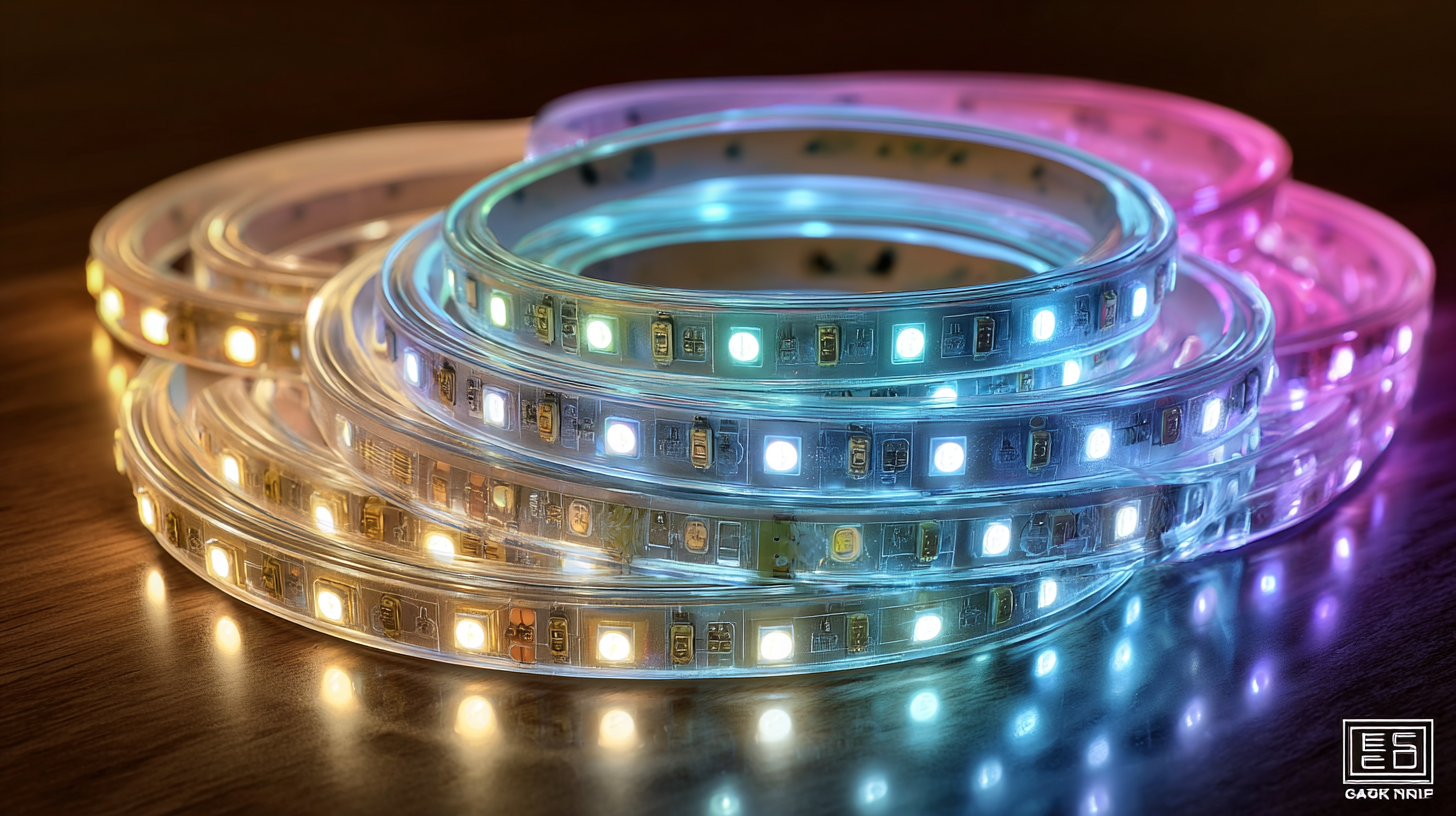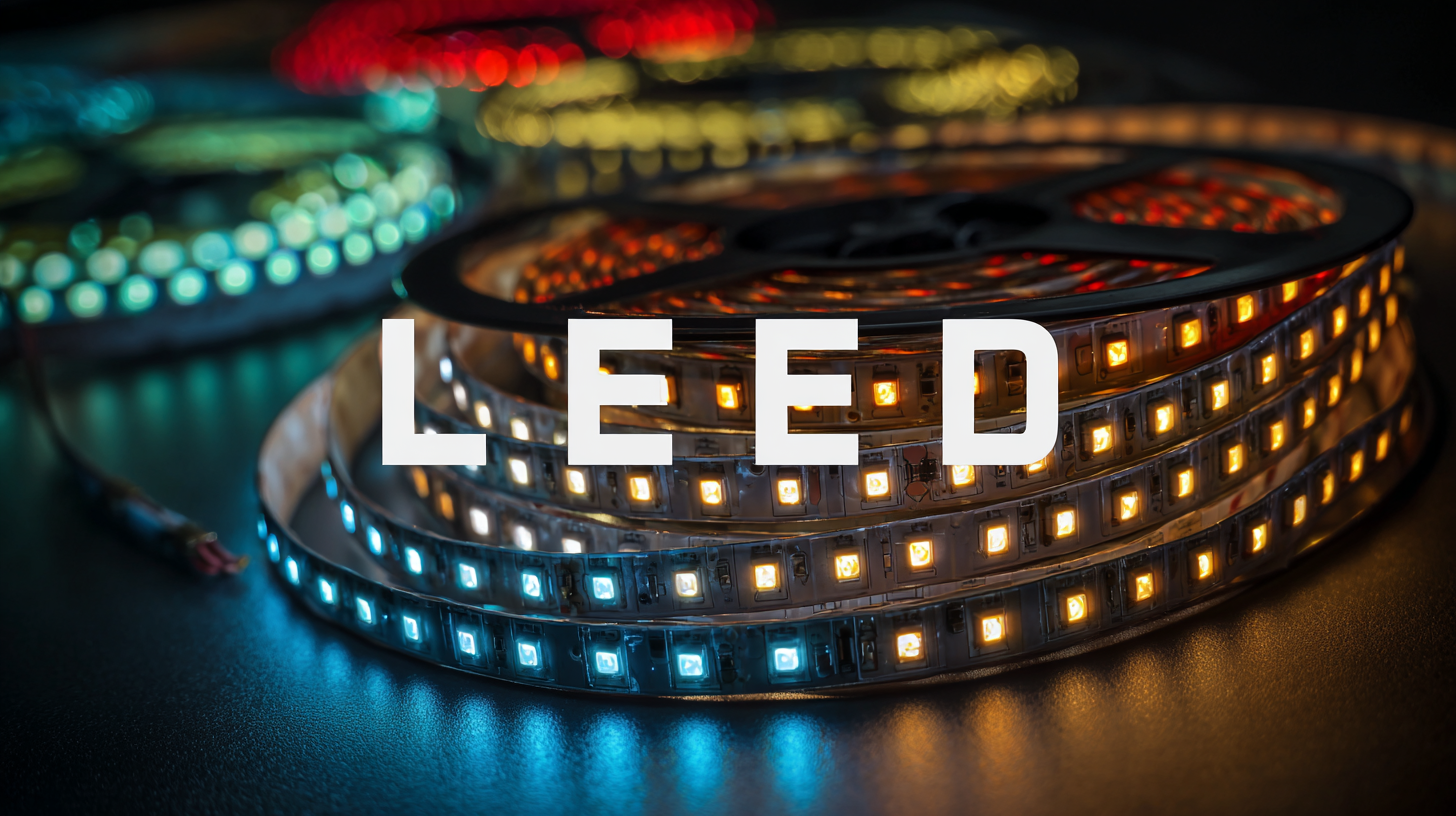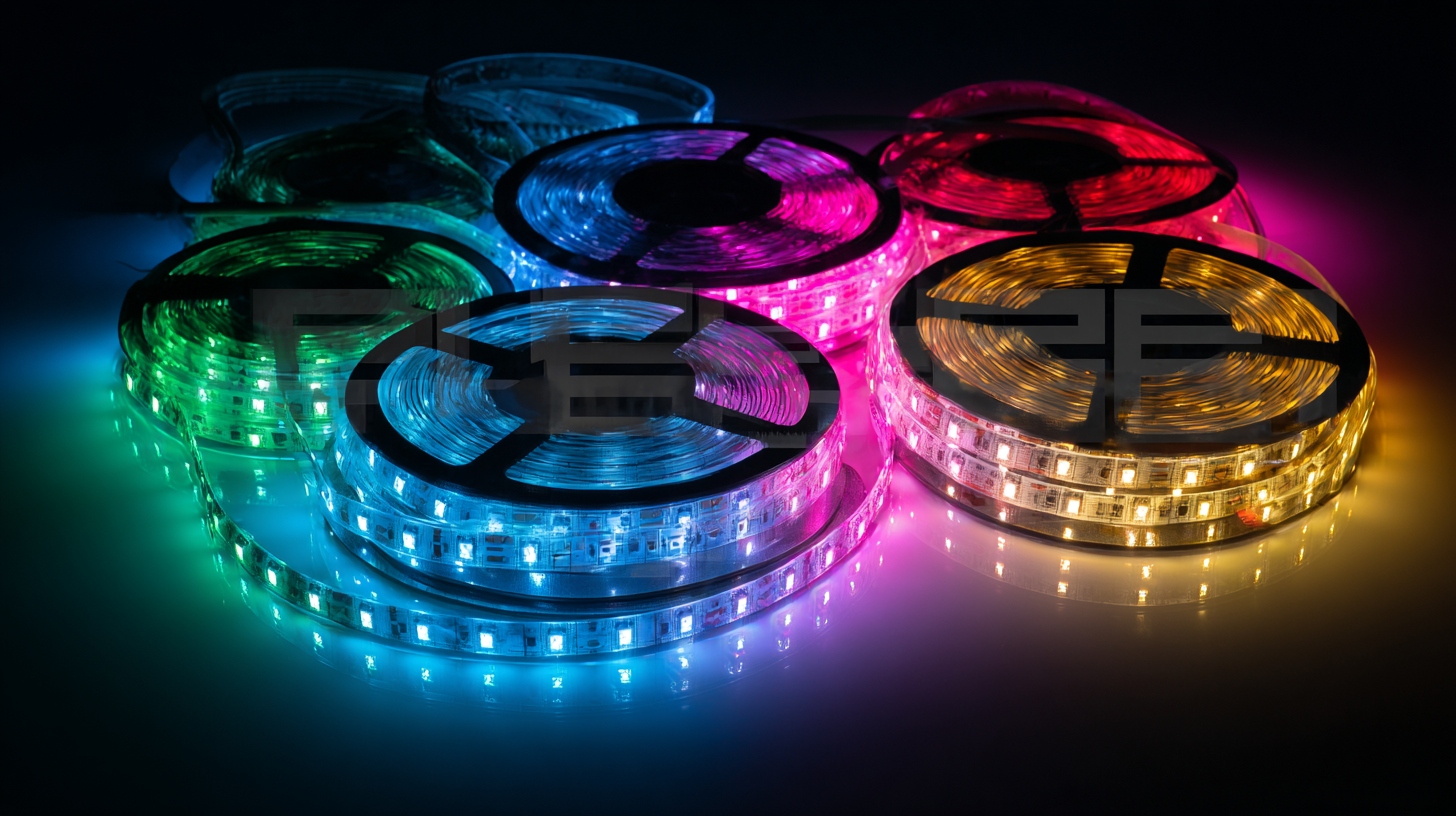

In recent years, the demand for versatile and energy-efficient lighting solutions has skyrocketed, with LED Strip Lights emerging as a popular choice for both residential and commercial spaces. As we approach 2025, an in-depth market analysis reveals a transformative trend driven by innovation, consumer preferences, and environmental considerations. Whether you’re looking to create a cozy ambiance in your home or an eye-catching display in a retail environment, understanding how to choose the best LED Strip Light to suit your unique lighting needs is crucial. This blog will guide you through the various types, features, and applications of LED Strip Lights, helping you make informed decisions that align with your aesthetic desires and functional requirements. Join us as we explore the dynamic landscape of LED lighting and equip you with the knowledge to enhance your spaces beautifully and efficiently.

When selecting LED strip lights, it’s crucial to understand the various types available and their unique features. One of the primary distinctions is between standard LED strips and flexible LED strips.
 Standard LED strips are typically rigid and come in fixed lengths, making them ideal for straight-line installations such as under cabinets or along walls. In contrast, flexible LED strips can bend and curve, allowing for creative lighting solutions in more intricate spaces, such as around furniture or in coves.
Standard LED strips are typically rigid and come in fixed lengths, making them ideal for straight-line installations such as under cabinets or along walls. In contrast, flexible LED strips can bend and curve, allowing for creative lighting solutions in more intricate spaces, such as around furniture or in coves.
Another important consideration is the color temperature and type of LED. Warm white lights create a cozy atmosphere, perfect for living areas, while cool white lights offer a brighter, more focused illumination ideal for task-oriented spaces like kitchens. Additionally, RGB LED strips allow users to customize colors and create dynamic lighting scenes, providing versatility for both ambiance and decorative purposes. Understanding these options empowers you to choose the LED strip light that best fits your unique lighting needs, enhancing both the aesthetics and functionality of your space.
When choosing LED strip lights for your home, there are several key factors to consider to ensure you find the perfect fit for your unique lighting needs. The growing market for home LED strip lights, which is anticipated to reach $219.14 million by 2033, underscores the increasing popularity and versatility of these lighting solutions.
One important consideration is the brightness and color options available. Depending on your requirement—be it ambient lighting, task lighting, or decorative purposes—you should select an LED strip that offers adjustable brightness levels and a spectrum of color temperatures. This adaptability can enhance the mood of your space, whether you're aiming for a cozy atmosphere or vibrant accent lighting.
Additionally, pay attention to the strip's flexibility and adhesive backing. The best LED strip lights should be easy to install and can bend to fit various designs or locations, such as around corners or in tight spaces. Look for options with strong adhesive that will hold up over time, ensuring your lighting remains securely in place, even in high-traffic areas.
When planning your lighting project with LED strip lights, one of the most crucial steps involves accurately measuring the required length. Start by determining the area you want to illuminate. Take note of any architectural features or furniture that might influence the placement of your lights. Using a reliable measuring tool, such as a laser distance measure, can streamline this process. These devices offer precise measurements, allowing you to gauge the exact length needed without the hassle of traditional tape measuring.
Once you've established the dimensions, consider any bends or corners in your design. LED strip lights can be cut to fit, but ensure your measurements leave room for any connectors or accessories you might need. Light pollution is also a vital aspect to keep in mind; understanding how different light levels affect indoor plants or living spaces can help in selecting the right brightness and color temperature for your lighting. By being meticulous in your measuring process, you can ensure a successful installation that meets both functional and aesthetic needs.
| Lighting Area | Recommended Length (ft) | Lumens Required | LED Type | Color Temperature (K) |
|---|---|---|---|---|
| Under Cabinet | 5 - 10 | 200 - 500 | 3014, 5050 | 2700 - 3000 |
| Living Room | 10 - 20 | 500 - 1000 | 5050, RGB | 3000 - 4000 |
| Bedroom | 8 - 15 | 300 - 600 | 3528, 5050 | 2700 - 3000 |
| Outdoor Patio | 10 - 25 | 600 - 1200 | 5050, RGB | 4000 - 6000 |
| Office | 5 - 10 | 400 - 800 | 5630, 3014 | 5000 - 6500 |
When selecting the ideal LED strip light, understanding color temperature and brightness is crucial. Color temperature is measured in Kelvins (K) and can greatly influence the ambiance of a space. Warm white (around 2700K-3000K) provides a cozy and inviting atmosphere, perfect for living rooms and bedrooms. In contrast, cool white (around 4000K-5000K) offers a more energizing vibe, making it suitable for kitchens and workspaces. By determining the atmosphere you wish to create, you can easily narrow down your choices.
Brightness, measured in lumens, also plays a significant role in your selection process. The right brightness level ensures that your space is adequately illuminated without being overly harsh. For detailed tasks, like reading or crafting, consider brighter strips with higher lumen outputs, while soft low-lumen options are excellent for ambient lighting in dining areas or bedrooms. Remember that factors like room size and wall color can also affect perceived brightness, so choose a strip that complements your unique lighting needs for the best results.
When it comes to installing LED strip lights, the key to maximizing their efficiency lies in careful planning and execution. First, consider the placement of the strips. LED lights work best when they are allowed to emit their brightness evenly across surfaces. Choosing the right location is crucial; for example, under cabinets, along stairways, or even inside coves can create a stunning ambient glow. Ensure that the surfaces you’re attaching them to are clean and dry to promote strong adhesion and prevent any sagging or peeling over time.

Another important tip is to utilize connectors and extensions wisely. Many LED strip kits come with accessories that enable you to make precise turns and joins without compromising the light’s quality. If cutting the strips is necessary, always follow the marked cut lines to maintain their operational integrity. Additionally, consider incorporating a dimmer switch or remote control to enhance the versatility of your lighting setup, allowing you to customize the brightness according to different activities or moods. Proper installation not only improves the aesthetic appeal but also enhances the longevity and performance of your LED strip lights.